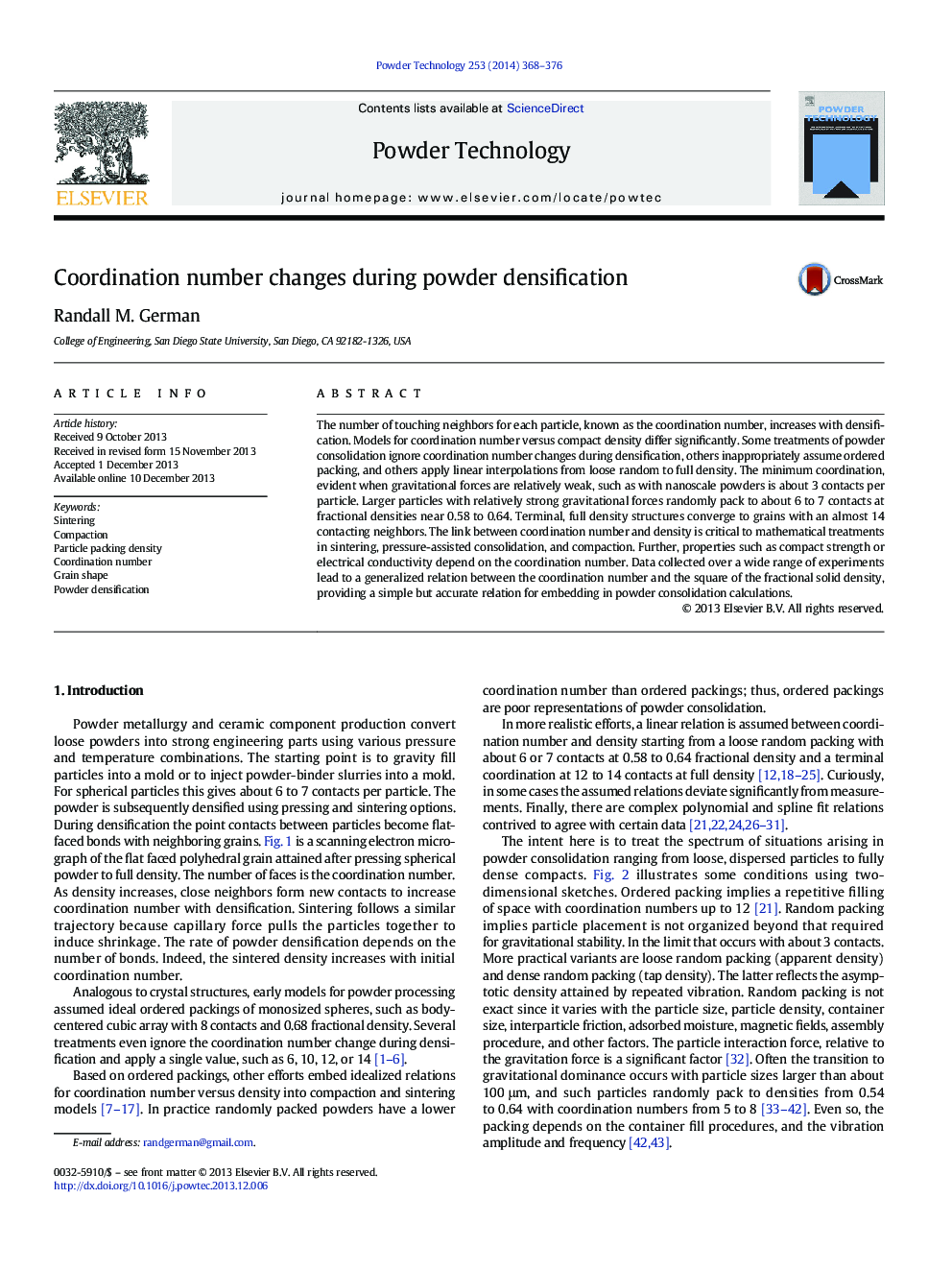| Article ID | Journal | Published Year | Pages | File Type |
|---|---|---|---|---|
| 236472 | Powder Technology | 2014 | 9 Pages |
•Large collection of coordination measurements and calculations are used.•Functional link between coordination number and fractional density is identified.•New equations are tested versus critically vetted data.•Functional relation enables coordination number inclusion in computer simulations.
The number of touching neighbors for each particle, known as the coordination number, increases with densification. Models for coordination number versus compact density differ significantly. Some treatments of powder consolidation ignore coordination number changes during densification, others inappropriately assume ordered packing, and others apply linear interpolations from loose random to full density. The minimum coordination, evident when gravitational forces are relatively weak, such as with nanoscale powders is about 3 contacts per particle. Larger particles with relatively strong gravitational forces randomly pack to about 6 to 7 contacts at fractional densities near 0.58 to 0.64. Terminal, full density structures converge to grains with an almost 14 contacting neighbors. The link between coordination number and density is critical to mathematical treatments in sintering, pressure-assisted consolidation, and compaction. Further, properties such as compact strength or electrical conductivity depend on the coordination number. Data collected over a wide range of experiments lead to a generalized relation between the coordination number and the square of the fractional solid density, providing a simple but accurate relation for embedding in powder consolidation calculations.
Graphical abstractThe increase in number of touching particles from distended minimum packing through random packing to full density structures is treated for pressing and sintering (P + S) and liquid phase sintering (LPS) and related technologies. A relation fits the experimental data where the coordination number changes with the fractional density squared, ranging from a low near 3 to a peak near 14.Figure optionsDownload full-size imageDownload as PowerPoint slide
